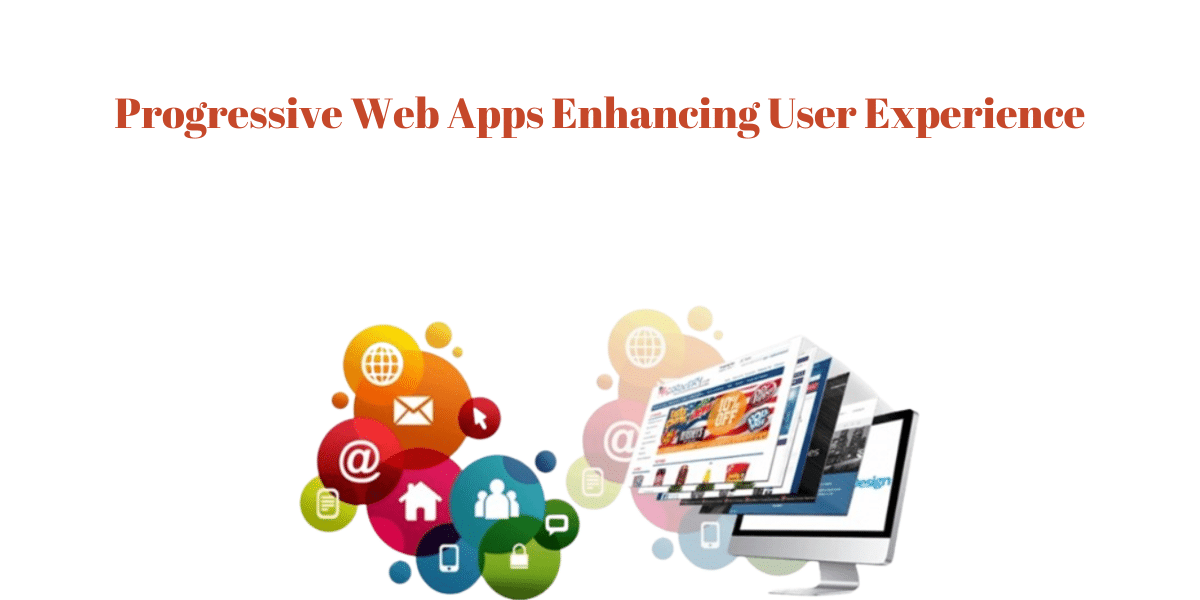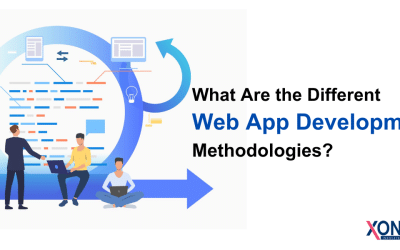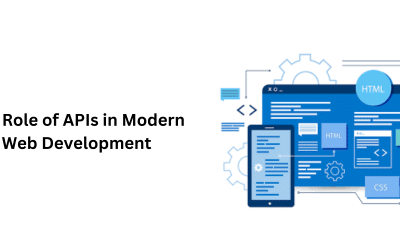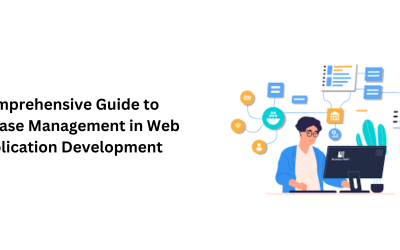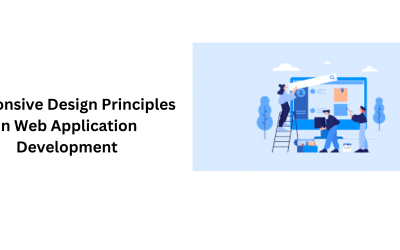In the dynamic landscape of digital experiences, Progressive Web Apps (PWAs) have emerged as a transformative force, revolutionizing the way users interact with web content. These applications combine the best of both worlds, blending the accessibility of traditional websites with the immersive functionality of native mobile apps. This introduction delves into the realm of PWAs, exploring how they redefine user experiences across various devices and network conditions.
Progressive Web Apps prioritize responsiveness, ensuring a seamless and consistent encounter regardless of the device being used. The integration of offline functionality allows users to access content even without an internet connection, amplifying accessibility. With faster load times and push notifications, PWAs engage users instantly, fostering heightened interaction and satisfaction.
This introductory overview also considers the economic advantages of PWAs, shedding light on their cost-efficiency and cross-browser compatibility. As we embark on an exploration of these cutting-edge applications, we unravel the intricate ways in which Progressive Web Apps development are enhancing user experiences in the digital age.
The Evolution of User Experience
The evolution of user experience (UX) has undergone a profound transformation with the advent of Progressive Web Apps (PWAs). Traditionally, users encountered static websites that lacked the responsiveness and interactivity now synonymous with modern digital experiences. PWAs bridge this gap by seamlessly combining the best attributes of web and mobile applications.
Unlike static sites, PWAs provide a dynamic and engaging interface, responding effortlessly to diverse devices and screen sizes. The integration of responsive design principles ensures that users enjoy a consistent and visually appealing experience across platforms. What sets PWAs apart is their offline functionality, a revolutionary feature in the evolution of UX. Users can access content even in the absence of a reliable internet connection, eliminating barriers to information consumption. Furthermore, the expedited loading times associated with PWAs contribute significantly to a positive user experience, as pages load swiftly, reducing wait times and enhancing overall satisfaction.
Push notifications, a hallmark of PWAs, introduce a real-time element to user engagement, enabling instant communication and interaction. This evolution of UX is not confined to a specific browser or operating system, as PWAs boast cross-browser compatibility, extending their impact across a broad user base. In essence, PWAs mark a shift from static web experiences to dynamic, responsive, and user-centric interactions. This evolution encompasses accessibility, speed, and engagement, demonstrating how PWAs have become pivotal in shaping a new era of seamless and enriched user experiences across the digital landscape.
Seamless Accessibility with PWAs
Progressive Web Apps (PWAs) have ushered in a new era of digital accessibility, seamlessly transforming the way users engage with online content. Unlike traditional websites or even some native applications, PWAs prioritize inclusivity by ensuring a consistent and responsive experience across a myriad of devices, from desktops to smartphones and tablets.
This commitment to seamless accessibility stems from the integration of responsive design principles, allowing PWAs to adapt effortlessly to varying screen sizes and resolutions. One of the hallmark features contributing to this accessibility is the offline functionality inherent in PWAs. By leveraging service workers, these applications enable users to access content even when an internet connection is unreliable or nonexistent, overcoming a longstanding limitation of traditional web experiences. This not only enhances accessibility for users in areas with sporadic connectivity but also caters to those who prefer the flexibility of accessing content offline.
Moreover, PWAs break down barriers by eliminating the need for users to download and install applications through traditional app stores. This not only simplifies the user journey but also conserves device storage space. The ability to add web app development directly to the device’s home screen fosters a more straightforward and accessible interaction model.
In essence, PWAs redefine digital accessibility by prioritizing responsiveness, offline functionality, and streamlined user interactions, making online content available to a broader audience while significantly enhancing the overall user experience. The shift towards seamless accessibility with PWAs marks a pivotal advancement in digital inclusivity, transcending conventional limitations and opening up new possibilities for a diverse range of users worldwide.
Responsive Design for Any Device
Progressive Web Apps (PWAs) stand at the forefront of a transformative approach to user experience, particularly in their commitment to responsive design for any device. This responsiveness represents a paradigm shift in the digital landscape, where users engage with content across an ever-expanding array of devices, each with distinct screen sizes and resolutions. Unlike traditional web applications that may struggle to adapt to diverse environments, PWAs leverage responsive design principles to ensure a seamless and visually appealing experience regardless of the device employed. This adaptability is not confined to standard desktop or laptop screens but extends to smartphones, tablets, and other emerging technologies. By employing a flexible and fluid layout, PWAs dynamically adjust to different screen dimensions, preserving content integrity and optimizing the user interface.
Moreover, the responsive nature of PWAs directly addresses the challenges posed by the diverse landscape of mobile devices. Whether a user accesses the PWA from a high-end smartphone or a budget-friendly tablet, the consistent and adaptive design guarantees a cohesive experience. This approach enhances user satisfaction and engagement by eliminating the frustration associated with distorted layouts or cumbersome navigation on smaller screens.
In essence, the commitment to responsive design in PWAs underscores a user-centric philosophy, acknowledging and accommodating the varied ways individuals interact with digital content. By breaking free from the constraints of fixed layouts, PWAs redefine the standards for cross-device compatibility, setting a new benchmark for a harmonious and accessible user experience across the entire spectrum of digital devices.
Offline Functionality and PWAs
Progressive Web Apps (PWAs) have revolutionized user experience by addressing a fundamental challenge in the digital realm – offline functionality. Traditionally, web applications required a constant and reliable internet connection, limiting accessibility in areas with connectivity issues or during network disruptions. PWAs, however, have disrupted this paradigm by introducing innovative approaches to offline functionality. At the core of this capability are service workers, which enable PWAs to cache essential assets and content during the initial interaction.
This caching mechanism empowers users to access previously visited PWAs even when offline, providing a seamless and uninterrupted experience. The significance of this feature extends beyond overcoming connectivity challenges; it fundamentally changes how users interact with web content. The offline functionality ensures that users can continue browsing, accessing critical information, or engaging with app-like features without interruption, fostering a sense of reliability and convenience.
PWAs have redefined the user experience by breaking free from the limitations of an “always-online” paradigm, making digital content available on the user’s terms. This is particularly impactful in scenarios where internet access is intermittent or in environments with limited connectivity. The PWA’s ability to store data locally and synchronize when a connection is re-established represents a monumental leap in the evolution of web applications.
Moreover, this feature has implications for users managing data usage, as PWAs minimize the need for continuous downloads and updates. In essence, offline functionality in PWAs is not merely a technical feature but a transformative aspect that enhances accessibility, user autonomy, and the overall resilience of web-based experiences in an ever-changing digital landscape.
Push Notifications: Engaging Users Instantly
The integration of push notifications within Progressive Web Apps (PWAs) has emerged as a cornerstone in redefining user engagement strategies, enabling instant and interactive communication with users. Unlike traditional web applications, PWAs harness the power of push notifications to reach users even when the app is not actively in use. This capability transforms the user experience by providing real-time updates, alerts, or personalized messages directly to the user’s device, fostering immediate engagement.
Push notifications serve as a direct channel for communication, allowing businesses, services, or content providers to convey time-sensitive information or promote relevant content effortlessly. By leveraging web push APIs, PWAs facilitate seamless interaction between users and the application, encouraging increased user retention and participation. This instant engagement is particularly influential in scenarios such as breaking news, promotional offers, or updates in dynamic content, where timely communication is paramount.
Moreover, push notifications contribute to the user-centric design philosophy of PWAs, enhancing the overall user experience. Users appreciate the convenience of staying informed without actively navigating to the application, creating a sense of connectivity and relevance. Additionally, the opt-in nature of push notifications empowers users to tailor their experience, ensuring that they receive only the updates that matter to them.
The balance between timely communication and user control positions push notifications as a powerful tool for user engagement within the context of PWAs, elevating the interactive potential and responsiveness of these web applications in the evolving landscape of digital interactions. As PWAs continue to shape the future of web experiences, push notifications play a pivotal role in establishing meaningful connections between users and the content or services they value.
Faster Load Times for Improved UX
The pursuit of an optimal user experience (UX) lies at the heart of Progressive Web Apps (PWAs), and one of the key elements contributing to this goal is their emphasis on faster load times. Traditional web applications often grapple with extended loading periods, leading to user frustration and potential disengagement.
PWAs address this challenge by employing various optimization techniques, such as service workers and efficient caching mechanisms, to expedite the loading process. By leveraging service workers, PWAs can store essential assets locally, allowing subsequent visits to the application to load swiftly and efficiently. This not only enhances the overall speed of the application but also ensures a consistently responsive experience, irrespective of the user’s network conditions. The significance of faster load times extends beyond mere convenience; it directly correlates with improved user satisfaction and retention.
In the fast-paced digital landscape, where attention spans are limited, PWAs redefine the standards for loading efficiency. Users are greeted with near-instantaneous access to content, reducing bounce rates and enhancing the likelihood of prolonged engagement. The commitment to faster load times aligns with the fundamental principle of user-centric design, acknowledging that a seamless and expedited experience contributes significantly to the perceived quality of the application.
As PWAs continue to gain prominence in the realm of web development, their emphasis on faster load times not only addresses a longstanding user pain point but also sets a new benchmark for the performance expectations of modern web applications. This focus on speed represents a pivotal aspect in the evolution of digital experiences, illustrating how PWAs are shaping a landscape where rapid, efficient, and user-friendly interactions are paramount.
PWAs and Cross-Browser Compatibility
The concept of Progressive Web Apps (PWAs) revolutionizes the traditional notions of web development, particularly in the realm of cross-browser compatibility. Unlike conventional web applications that may encounter inconsistencies and challenges across different browsers, PWAs are engineered to deliver a consistent user experience irrespective of the browser being used.
This commitment to cross-browser compatibility stems from the adoption of standardized web technologies and progressive enhancement principles. PWAs leverage a responsive design approach, ensuring that the application adapts seamlessly to various browsers, including Chrome, Firefox, Safari, and Edge. The use of service workers, a key component of PWAs, enables enhanced offline functionality and performance, and their compatibility across browsers ensures that users can access these capabilities uniformly.
This cross-browser compatibility is not just a technical feat but a strategic move to maximize the reach and impact of PWAs. Users are no longer constrained by the limitations imposed by a specific browser, fostering a more inclusive and accessible digital experience. Whether users access the PWA on their desktop using Firefox or on their mobile device using Safari, the consistent functionality and design principles persist, creating a harmonized experience. As the digital landscape evolves, and users diversify their browser preferences across devices, the adaptability of PWAs becomes increasingly pivotal. By prioritizing cross-browser compatibility, PWAs exemplify a user-centric approach, recognizing the importance of providing a seamless and reliable experience regardless of the platform, ultimately contributing to the broader adoption and success of these innovative web applications.
Enhancing User Engagement through PWAs
Progressive Web Apps (PWAs) represent a transformative force in the digital realm, particularly in their ability to significantly enhance user engagement. Unlike traditional web applications, PWAs offer a more immersive and interactive experience, fostering a deeper connection between users and digital content. The seamless integration of features such as push notifications and offline functionality contributes to this heightened engagement.
Push notifications enable real-time communication, allowing businesses and content providers to reach users instantly, whether to convey important updates or promote personalized content. The offline functionality of PWAs, enabled by service workers, ensures that users can continue interacting with the application even in the absence of a stable internet connection, providing uninterrupted access to critical information. This not only caters to users in areas with connectivity challenges but also aligns with evolving user expectations for constant connectivity and instant access to content.
Moreover, PWAs leverage responsive design principles, adapting effortlessly to various devices and screen sizes. This adaptability ensures a consistent and visually appealing experience, regardless of whether users access the application on a desktop, tablet, or smartphone. By breaking down barriers between web and native app experiences, PWAs offer users the best of both worlds, combining the discoverability of websites with the immersive capabilities of native apps.
The resulting user-centric design philosophy positions PWAs as powerful tools for enhancing engagement, as users are more likely to interact with applications that provide a seamless, convenient, and feature-rich experience. As PWAs continue to gain traction, their capacity to drive sustained user engagement underscores their pivotal role in shaping the future of digital interactions and elevating the overall quality of online experiences.
Cost-Efficiency and PWAs
Progressive Web Apps (PWAs) emerge not only as technological innovations but also as strategic solutions, significantly contributing to cost-efficiency in the realm of digital development. Unlike their native counterparts, PWAs eliminate the need for separate development cycles for various platforms, mitigating the associated costs and complexities. The single codebase of PWAs ensures uniformity across devices, streamlining the web app development and maintenance processes. Additionally, PWAs circumvent the resource-intensive app store distribution model, allowing businesses and developers to deploy updates directly, avoiding the associated fees and delays.
The lightweight nature of PWAs reduces data usage, benefiting users in areas with limited bandwidth and minimizing operational costs for businesses hosting the applications. The flexibility to add PWAs to the home screen without going through an app store not only simplifies the user experience but also reduces acquisition costs, as users can discover and engage with the application seamlessly.
Furthermore, PWAs leverage caching mechanisms and service workers to optimize performance and reduce the strain on servers, contributing to operational cost savings. The enhanced user engagement facilitated by features like push notifications and offline functionality, intrinsic to PWAs, also drives long-term cost-efficiency by fostering user retention and satisfaction. In essence, PWAs exemplify a cost-effective approach to digital development, aligning with the principles of efficiency and accessibility. As businesses seek scalable and budget-conscious solutions in the competitive digital landscape, PWAs emerge as a compelling choice, offering a harmonious blend of performance, user experience, and cost-effectiveness, ultimately shaping a more sustainable and pragmatic approach to application development.
PWAs vs Native Apps: A Comparative Analysis
In the ever-evolving landscape of digital experiences, the choice between Progressive Web Apps (PWAs) and Native Apps has become a critical decision point for developers and businesses alike. A comparative analysis reveals distinct strengths and considerations for each approach. PWAs, with their single codebase, offer a cost-effective solution by eliminating the need for separate development cycles for various platforms. They are inherently cross-platform, ensuring uniformity across devices and browsers.
Moreover, PWAs bypass the complexities of app store distribution, providing developers with greater control over updates and reducing associated fees. On the other hand, Native Apps, built for specific platforms, often boast superior performance and take advantage of platform-specific features, resulting in a more polished user experience. While PWAs leverage responsive design for adaptability, Native Apps can tap into device-specific functionalities more deeply.
The discoverability of PWAs through search engines and their seamless integration into the user’s web experience contribute to a broader reach and simplified user acquisition. Native Apps, however, thrive within the controlled ecosystems of app stores, offering enhanced visibility. Offline functionality, a hallmark of PWAs, ensures continuous user engagement even without a stable internet connection, a feature often more challenging to implement in Native Apps.
Despite these advantages offered by web development, Native Apps excel in scenarios where deep integration with device features or access to specialized hardware is essential. In essence, the choice between PWAs and Native Apps hinges on factors such as development resources, desired features, and target audience. This comparative analysis underscores the nuanced considerations that businesses and developers must weigh to align their choice with the specific goals and requirements of their digital strategy.
Optimizing Performance with Progressive Web Apps
Progressive Web Apps (PWAs) have emerged as a beacon in the realm of web development, offering a robust solution for optimizing performance and delivering an enhanced user experience. The performance gains of PWAs are evident through the incorporation of various optimization techniques. Leveraging service workers, PWAs can cache essential assets and content, reducing the need for repeated downloads and significantly speeding up load times.
This caching mechanism not only fosters faster initial interactions but also enables users to access content seamlessly, even in offline mode. The efficiency of service workers extends to background processes, allowing PWAs to update content and fetch data without requiring user interaction, further minimizing disruptions in performance. Additionally, PWAs employ responsive design principles, ensuring adaptability to diverse devices and screen sizes. This responsive approach enhances the overall performance by providing a consistent and visually appealing experience across various platforms.
The lightweight nature of PWAs contributes to accelerated performance, benefiting users with limited bandwidth and positively impacting data usage costs. Furthermore, PWAs are designed to minimize server load through efficient caching, reducing the strain on resources and optimizing overall responsiveness.
The commitment to performance optimization in PWAs aligns with the user-centric design philosophy, acknowledging that speed and efficiency are integral components of a positive digital experience. As businesses and developers strive to provide seamless and fast interactions in an increasingly competitive digital landscape, the optimization capabilities embedded within PWAs position them as a compelling choice, bridging the gap between web and native app performance and setting new standards for performance excellence in the world of web development.
PWA Security: A Trustworthy User Experience
Ensuring a trustworthy user experience is paramount in the digital landscape, and Progressive Web Apps (PWAs) address this imperative with a robust focus on security. The security measures implemented in PWAs are multi-faceted, aiming to safeguard user data, interactions, and the overall integrity of the application.
PWAs benefit from the use of HTTPS, encrypting data in transit and mitigating the risk of man-in-the-middle attacks, thereby fostering a secure channel for communication between the user’s device and the server. Additionally, the adoption of service workers in PWAs enables the enforcement of content security policies, reducing the risk of cross-site scripting (XSS) attacks and other code injection vulnerabilities. PWAs also adhere to the same-origin policy, restricting interactions between scripts from different origins, thus mitigating the potential impact of malicious code.
Moreover, PWAs leverage the application manifest file to declare essential metadata, defining the application’s behavior and permissions. This allows users to make informed decisions regarding the installation and engagement with the PWA. The clear permissions model, coupled with the absence of intermediaries such as app stores, enhances transparency and user control.
As PWAs offer seamless offline functionality, data storage and access controls are crucial elements in ensuring security during offline interactions. The use of secure storage options, such as IndexedDB or Cache API, contributes to safeguarding sensitive data even when the device is offline. In essence, PWA security is not merely a feature but a holistic approach to user trust. By combining encryption, content security policies, a robust permissions model, and secure storage practices, PWAs exemplify a commitment to providing users with a trustworthy and secure digital experience, establishing a foundation of confidence in the evolving landscape of web applications.
Progressive Web Apps and SEO Benefits
Progressive Web Apps (PWAs) not only revolutionize user experience but also bring substantial SEO benefits, reshaping the landscape of online visibility. One key advantage lies in the discoverability of PWAs through search engines, as they are inherently web-based and can be indexed by search engine algorithms. This means that the content within a PWA can be crawled and ranked, contributing to improved search engine rankings and increased organic traffic.0
Additionally, the seamless and responsive design principles inherent in PWAs enhance user experience, a factor that search engines increasingly prioritize in their algorithms. Faster loading times, a hallmark of PWAs, positively impact bounce rates, user engagement, and, consequently, SEO rankings. Moreover, PWAs facilitate a consistent user experience across devices, eliminating the need for separate mobile sites, which can have positive implications for mobile-first indexing, a critical consideration in contemporary SEO strategies.
The offline functionality of PWAs also aligns with SEO objectives. Even in offline mode, users can access cached content, ensuring continued engagement and reducing bounce rates. Furthermore, the ability to add PWAs to the home screen fosters user retention, as the application is readily accessible with a single tap, contributing to prolonged user interactions and signaling relevance to search engines. As Google continues to emphasize mobile-friendly experiences and fast-loading pages in its search algorithms, PWAs emerge as an adaptive solution that not only meets these criteria but goes beyond, ushering in a new era where SEO benefits are intricately woven into the fabric of an enhanced and progressive user experience.
How PWAs Bridge the Gap Between Web and Apps
Progressive Web Apps (PWAs) serve as a transformative bridge between the web and native applications, unifying the strengths of both to provide users with a seamless and immersive digital experience. At their core, PWAs leverage web technologies to offer an app-like experience directly through a browser. The responsive design principles embedded in PWAs ensure that the application adapts effortlessly to various devices and screen sizes, blurring the traditional distinctions between web and native app interfaces. The installation process further exemplifies this convergence, as users can add PWAs to their device’s home screen with a single tap, eliminating the need for app store downloads and installations.
The integration of service workers is a pivotal element in bridging the gap between web and apps. These background scripts enable PWAs to cache essential assets and data, providing offline functionality and minimizing reliance on a consistent internet connection. This functionality, characteristic of native apps, ensures users can access content seamlessly, regardless of connectivity challenges. Additionally, PWAs leverage application manifest files, allowing developers to declare metadata such as icons, names, and display preferences. This declaration enhances the PWA’s integration into the user’s device, making it indistinguishable from native applications in terms of appearance and behavior.
The user engagement facilitated by PWAs further contributes to this convergence. With features like push notifications and offline access, PWAs offer the interactivity associated with native apps, providing users with a richer and more responsive experience. By amalgamating the accessibility and discoverability of the web with the immersive features of native apps, PWAs redefine the digital landscape, embodying a harmonious bridge that transcends traditional boundaries and ushers in a new era of versatile, user-centric, and accessible digital interactions.
User-Centric Design Principles in PWAs
User-centric design principles lie at the heart of Progressive Web Apps (PWAs), shaping a digital experience that prioritizes accessibility, engagement, and satisfaction. One fundamental aspect of user-centric design within PWAs is responsiveness. By seamlessly adapting to diverse devices and screen sizes, PWAs ensure a consistent and visually appealing experience, eliminating the frustration associated with incompatible layouts.
This adaptability extends beyond traditional web applications, providing users with a fluid and cohesive interface reminiscent of native apps. Moreover, the installation process of PWAs exemplifies user-centricity, allowing users to add the app to their home screen effortlessly, streamlining access and fostering a sense of ownership.
Offline functionality, facilitated by service workers, represents another pillar of user-centric design in PWAs. Recognizing the varied nature of internet connectivity, PWAs enable users to access content even in offline mode, ensuring uninterrupted engagement. This feature is particularly beneficial in regions with limited connectivity or during periods of network disruptions.
The use of push notifications further underscores user-centricity by enabling real-time communication and engagement. Users can receive timely updates, alerts, or personalized messages, enhancing the overall interactive experience. Additionally, PWAs prioritize the security of user data, leveraging HTTPS to encrypt data in transit and employing content security policies to mitigate potential vulnerabilities.
The user-centric design philosophy extends to the optimization of load times, a critical factor in user satisfaction. PWAs, by employing efficient caching mechanisms, significantly reduce loading times, enhancing the immediacy of user interactions. In essence, PWAs exemplify a commitment to placing user needs at the forefront, weaving a tapestry of accessibility, engagement, and satisfaction that transcends the boundaries of traditional web applications.
Accessibility Features in Progressive Web Apps
Progressive Web Apps (PWAs) embrace a commitment to inclusivity by incorporating robust accessibility features, fostering a digital environment where users of diverse abilities can engage seamlessly with content. A cornerstone of PWA accessibility is responsive design, ensuring that applications adapt effortlessly to various devices and screen sizes.
This adaptability promotes a consistent and visually appealing user experience, irrespective of the user’s chosen platform. Additionally, PWAs implement features that enhance accessibility for individuals with varying levels of motor skills or visual impairments. Customizable text sizes, adaptable color contrasts, and support for screen readers contribute to a more accommodating and user-friendly interface.
Moreover, the offline functionality inherent in PWAs plays a significant role in enhancing accessibility. Users with intermittent or limited internet access can continue to interact with content stored locally, reducing barriers to information consumption. The use of service workers, which enable this offline capability, exemplifies a thoughtful approach to accessibility by acknowledging the diverse connectivity scenarios users may encounter.
PWAs also prioritize keyboard navigation and focus management, ensuring that individuals relying on keyboard input or assistive technologies can navigate through the application seamlessly. ARIA (Accessible Rich Internet Applications) landmarks and roles further enhance the structural understanding of web content for screen readers. By embracing these accessibility features, PWAs contribute to a more inclusive digital landscape, recognizing the importance of accommodating users with varying abilities. This commitment to accessibility not only aligns with ethical considerations but also positions PWAs as pioneers in creating a more universally accessible and user-friendly web experience.
PWAs and the Future of Web Development
Progressive Web Apps (PWAs) stand as vanguards in the evolution of web development, offering a glimpse into the future of digital experiences. Their innovative blend of web and app functionalities represents a paradigm shift, redefining user expectations and industry standards. PWAs embody a user-centric approach by prioritizing accessibility, engagement, and seamlessness. As the digital landscape continues to diversify with an array of devices and network conditions, the responsiveness of PWAs to different platforms positions them as a versatile solution, erasing the traditional distinctions between web and native app interactions.
The offline functionality powered by service workers addresses a longstanding challenge, ensuring users can access content irrespective of connectivity. The installation simplicity and discoverability of PWAs through search engines contribute to a frictionless user journey, challenging the conventions of app stores and downloads. PWAs also play a pivotal role in bridging the gap between the web and apps, providing a unified and consistent experience. As user expectations evolve, driven by the need for speed, interactivity, and accessibility, PWAs emerge as a response to these demands. Their impact is not confined to a specific industry; rather, PWAs revolutionize diverse sectors such as e-commerce, media, and business applications.
The future of web development is intricately tied to the principles embodied by PWAs – a commitment to speed, reliability, engagement, and inclusivity. As the industry continues to embrace this progressive approach, PWAs set the trajectory for a future where digital interactions seamlessly adapt to user needs, regardless of the device or network constraints. The convergence of web and app experiences within the framework of PWAs heralds a new era, positioning them as a catalyst for the transformative evolution of web development practices.
The Role of Service Workers in PWAs
Service workers play a pivotal and transformative role within the architecture of Progressive Web Apps (PWAs), contributing to their fundamental capabilities and enhancing the overall user experience. At the core, service workers are scripts that run independently in the background, separate from the web page, enabling PWAs to leverage powerful features. One of their primary functions is to facilitate offline functionality, a defining characteristic of PWAs.
By strategically caching essential assets and content during the initial interaction, service workers enable users to seamlessly access the PWA even in the absence of a stable internet connection. This not only addresses challenges related to connectivity but also ensures uninterrupted user engagement, marking a significant departure from the limitations of traditional web applications.
Service workers also contribute to the performance optimization of PWAs. By serving as intermediaries between the application and the network, they can efficiently manage requests, prioritize resources, and minimize the need for constant server interaction. This optimization leads to faster load times, reduced server load, and an overall improvement in the responsiveness of PWAs. Additionally, service workers empower PWAs to implement push notifications, enabling real-time communication with users. This feature enhances user engagement by allowing businesses to convey timely updates or personalized messages even when the PWA is not actively in use.
The ability of service workers to operate independently from the main browser thread enhances the robustness of PWAs, providing a more resilient and efficient architecture. Their role in enabling offline access, optimizing performance, and facilitating real-time communication underscores the transformative impact of service workers within the realm of PWAs, contributing to a more versatile, responsive, and user-centric web experience.
PWAs and Cross-Platform Functionality
Progressive Web Apps (PWAs) stand out as pioneers in the realm of cross-platform functionality, offering a versatile solution that transcends the limitations of traditional web or native applications. Central to their appeal is the commitment to a single codebase that seamlessly adapts to various operating systems and devices, delivering a consistent user experience regardless of the platform.
This adaptability is achieved through responsive design principles, allowing PWAs to dynamically adjust to different screen sizes and resolutions, a crucial aspect in an era where users engage with digital content across diverse devices. Unlike native apps, PWAs do not require separate development cycles for each platform, streamlining the development process and reducing associated costs.
Moreover, PWAs leverage standardized web technologies, ensuring compatibility across popular browsers like Chrome, Firefox, Safari, and Edge. This cross-browser support further extends their reach, offering a consistent experience for users irrespective of their browser preferences. The ease of access and installation, without the need for app store downloads, enhances the user-centric nature of PWAs, simplifying the engagement process across platforms.
Furthermore, the use of service workers in PWAs enables offline functionality, ensuring users can access content even when connectivity is limited or intermittent. This cross-platform offline access is a significant advantage, particularly in regions with varying levels of internet infrastructure. In essence, PWAs redefine the landscape of cross-platform functionality by embracing the universality of the web, delivering a harmonized and accessible user experience that seamlessly spans operating systems, devices, and browsers. As the digital ecosystem continues to diversify, PWAs emerge as a pivotal force, uniting the web and app experiences in a way that enhances accessibility and user satisfaction across the entire spectrum of platforms.
The Impact of PWAs on Conversion Rates
Progressive Web Apps (PWAs) wield a transformative impact on conversion rates, reshaping the digital landscape by offering a streamlined and engaging user experience. The enhanced performance and faster load times inherent in PWAs contribute significantly to reducing bounce rates and improving overall user satisfaction.
Users are more likely to convert when they experience seamless interactions, and PWAs, with their expedited loading and responsive design, create an environment conducive to prolonged engagement. Moreover, the offline functionality enabled by service workers ensures users can access the PWA and its content even in low or no connectivity scenarios, eliminating barriers that might impede conversion. The simplified installation process, allowing users to add PWAs to their home screen with a single tap, fosters user loyalty and increases the likelihood of return visits.
PWAs also facilitate push notifications, a powerful tool for real-time communication and re-engagement. Businesses can send personalized updates or promotions directly to users, nurturing ongoing interactions and reinforcing brand loyalty. The adaptability of PWAs across various devices, browsers, and operating systems ensures a consistent and optimized experience, reducing friction in the user journey and positively impacting conversion rates.
As the digital landscape evolves, with users increasingly valuing speed, accessibility, and immersive experiences, PWAs emerge as a strategic asset for businesses seeking to elevate their conversion rates. By combining the best of web and app functionalities, PWAs create an environment where user-centric design principles harmonize with business objectives, ultimately driving higher conversion rates and positioning PWAs as a catalyst for success in the competitive digital arena.
Analytics and User Tracking in Progressive Web Apps
Progressive Web Apps (PWAs) leverage analytics and user tracking mechanisms to provide developers and businesses with valuable insights into user behavior, interactions, and the overall performance of the application. Traditional web analytics tools can be seamlessly integrated into PWAs, allowing developers to gather data on user engagement, page views, and conversion metrics.
The versatility of PWAs extends to the ability to employ custom tracking solutions, tailoring analytics to specific business goals. These analytics not only track user interactions within the PWA but also provide valuable information on how users engage with the application across different devices, browsers, and platforms. This cross-platform visibility is particularly beneficial as it enables developers to optimize the user experience based on comprehensive data.
User tracking in PWAs also encompasses the monitoring of offline interactions. Analytics can capture user actions and behaviors when the PWA is accessed in offline mode, providing insights into user preferences and content consumption patterns during periods of limited connectivity. Additionally, the integration of service workers in PWAs contributes to efficient caching, minimizing server requests and reducing the load on analytics systems. While analytics and user tracking are essential for refining user experiences and optimizing business strategies, it is crucial to prioritize user privacy and adhere to best practices in data collection and storage. The judicious use of analytics in PWAs empowers businesses with the knowledge needed to make informed decisions, adapt to user preferences, and continuously enhance the overall performance and user satisfaction of their Progressive Web Apps.
Scalability and PWAs: Handling Growth Effectively
Scalability is a critical aspect of web applications, and Progressive Web Apps (PWAs) exemplify a versatile and efficient approach to handling growth effectively. The architecture of PWAs, built on standardized web technologies, inherently supports scalability by offering a single codebase that seamlessly adapts to diverse devices and platforms.
This adaptability streamlines the development process, allowing businesses to expand their user base without the need for extensive modifications or separate development cycles. Additionally, PWAs leverage responsive design principles, ensuring a consistent and visually appealing user experience regardless of the screen size or resolution, a crucial consideration in an era where users engage with content across a spectrum of devices.
Moreover, the offline functionality of PWAs, facilitated by service workers, contributes to scalability by minimizing the reliance on constant server interactions. Users can access content even in offline mode, reducing the strain on servers during peak usage or in areas with limited connectivity. The use of efficient caching mechanisms further optimizes performance and reduces the need for repeated downloads, enhancing the scalability of PWAs. As user numbers grow, the seamless integration of push notifications in PWAs serves as a powerful tool for re-engagement and communication, fostering ongoing user interactions without overburdening server resources.
The modular nature of PWAs allows for easy updates and modifications, ensuring scalability without compromising user experience. This adaptability positions PWAs as a scalable solution that can effectively handle growth, providing businesses with the flexibility and efficiency needed to navigate the dynamic landscape of digital expansion. As organizations continue to embrace the potential of PWAs, their inherent scalability becomes a strategic asset, aligning with the demands of an ever-growing and evolving user base.
PWAs in E-Commerce: Revolutionizing Online Shopping
Progressive Web Apps (PWAs) are spearheading a revolution in the realm of e-commerce, redefining the online shopping experience and setting new benchmarks for accessibility, performance, and user engagement. In the competitive landscape of digital commerce, PWAs offer a compelling solution by combining the best features of websites and native apps.
The seamless and responsive design of PWAs ensures a consistent and visually appealing interface across devices, eliminating the need for users to switch between multiple platforms. The speed and efficiency of PWAs, facilitated by service workers and optimized caching mechanisms, lead to faster load times and a smoother navigation experience, crucial factors in retaining user interest and reducing bounce rates.
Offline functionality is a game-changer in the context of e-commerce PWAs. Users can browse products, add items to their carts, and even complete transactions without a continuous internet connection, addressing a common pain point in online shopping. The ability to send push notifications enables e-commerce businesses to communicate real-time updates, promotions, or personalized offers directly to users, fostering engagement and driving conversions. Additionally, PWAs in e-commerce often incorporate features like home screen installation, enabling users to access the online store with a single tap, enhancing brand visibility and user retention.
The versatility of PWAs ensures a seamless shopping experience regardless of the user’s device, browser, or connectivity, expanding the reach of e-commerce businesses. As the future of online shopping continues to evolve, PWAs emerge as a transformative force, providing a user-centric, efficient, and scalable solution that empowers e-commerce enterprises to thrive in the ever-changing digital landscape.
The Key Takeaway
In conclusion, Progressive Web Apps (PWAs) stand at the forefront of a transformative era in web development company, offering a holistic approach that harmonizes the best features of traditional websites and native applications. With their responsive design principles, offline functionality, and seamless cross-platform compatibility, PWAs redefine user expectations, delivering a superior and consistent experience across diverse devices.
The impact of PWAs extends beyond mere technological innovation, influencing user engagement, accessibility, and performance optimization. Whether in e-commerce, user tracking, or scalability, PWAs showcase their adaptability and efficiency. As businesses and developers increasingly prioritize speed, user satisfaction, and accessibility, PWAs emerge as a strategic solution that not only addresses contemporary challenges but also sets new standards for the future of digital interactions. In embracing the principles of user-centric design, security, and performance excellence, PWAs pave the way for a more inclusive, efficient, and dynamic digital landscape.

